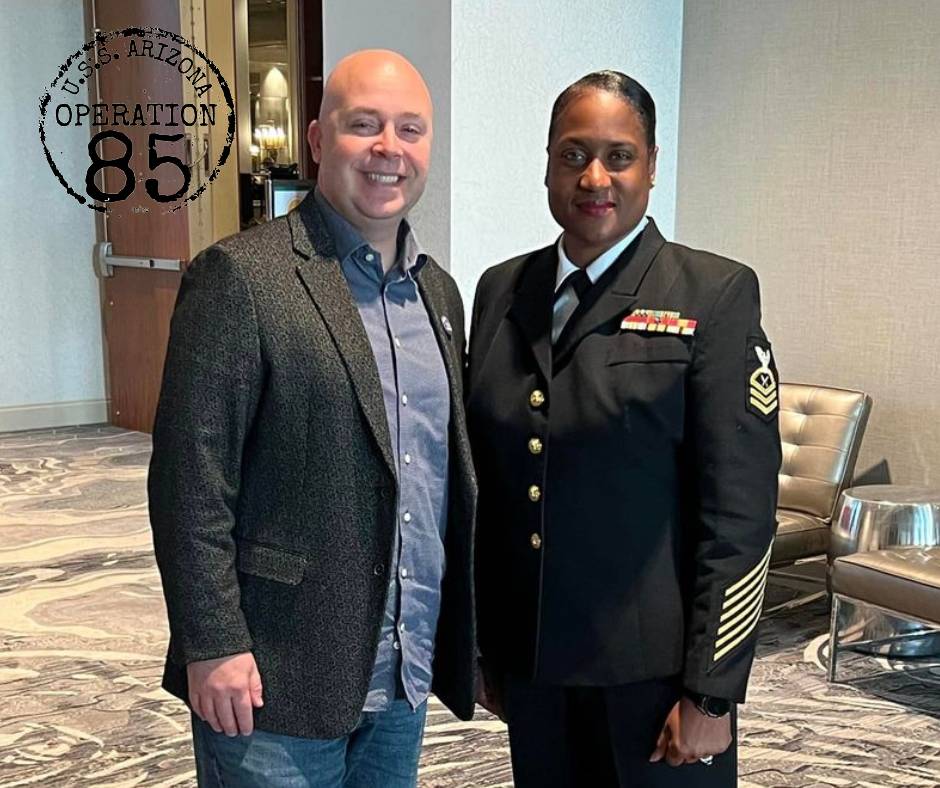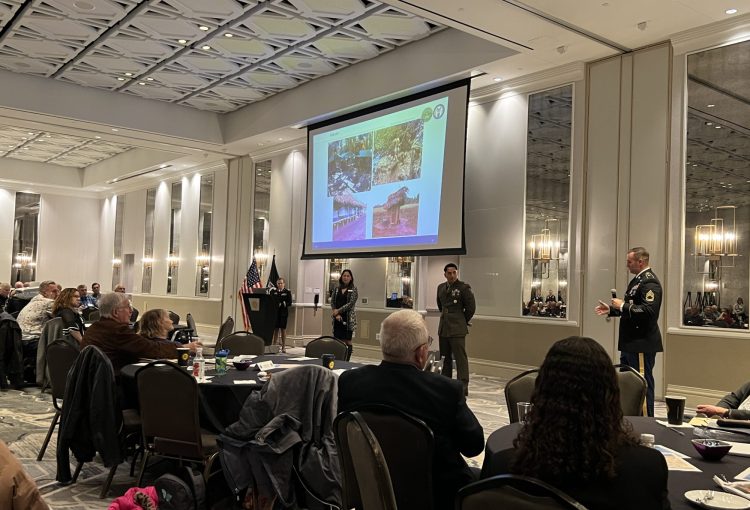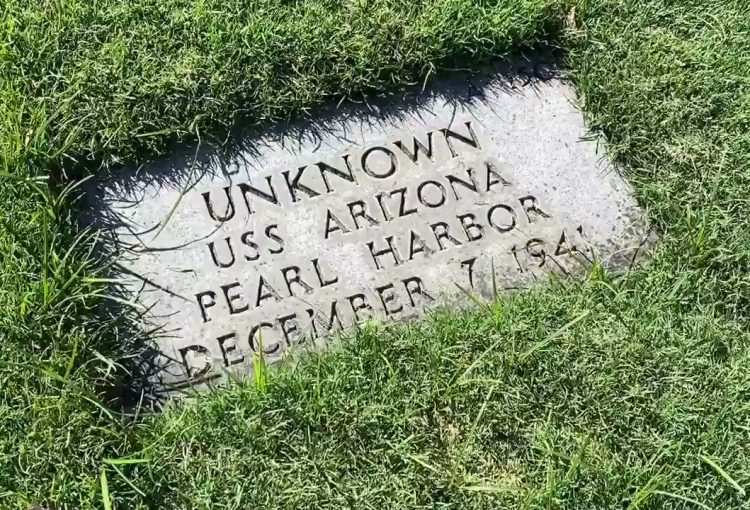
U.S.S. Arizona Family Member Launches Roadmap to Identify its “Unknown” Crew Members

Written by: RJ Thompson
It wasn’t fully known at the time what was going to transpire out of this solo weekend trip to Norfolk, VA for Kevin Kline. For years, Kline had received letters from the Defense POW / MIA Accounting Agency (DPAA) about attending these family update events all across the country. Kline is officially on record with the U.S. Navy Casualty Office as the next of kin and great nephew of GM2c Robert Edwin Kline, a US Navy Sailor who was killed aboard the U.S.S. Arizona and was one of the 1072 crew members whose remains were never recovered after the December 7, 1941 attack on Pearl Harbor, Hi.
A Meeting With the Players…
During the all day Saturday conference, each family member attending and representing their loved one, gets a private “one-on-one” meeting with their assigned military casualty officer for a review and update of the deceased case file. Kline, who came to the event armed with more documents and files on his uncle than the Navy and Army had combined, knew it was his opportunity to make a pitch for something greater. Instead of just a one-on-one with his assigned Casualty Officer from the Navy, Kline requested a few more ears at his table. The meeting included U.S. Navy Chief Petty Officer Deshannon Beaty, Mr. Andrew Speelhoffer, a WWII Historian from the Defense POW / MIA Accounting Agency, and also Dr. Timothy McMahon, Director of the DoD DNA Operations of the Armed Forces Medical Examiner System.
The Answers are Not So Simple….
So the initial question from Kline seemed pretty simple. “If you have the exact whereabouts of potentially 85 unknown U.S.S. Arizona sailors, why are you not moving to identify them?…my uncle could be one of those 85,” Kline asked. After all, that is the sole purpose and mission of the DPAA. Currently the DPAA travels all over the world excavating a multitude of terrain, searching for clues of American service member burial spots or remains. Its both an exhaustive and amazing effort put forth by the men and women of this agency. Kline added that “it was probably the only government agency he’s ever seen where everyone involved, from top to bottom, truly cared and loved the mission they were doing”.

DPAA Family Update Meeting in Norfolk, VA – NOV 19, 2022
However, currently there are 85 “known” graves marked as “unknown” that are buried in the National Memorial Cemetery of the Pacific in Honolulu, Hi. These “unknowns” are sailors or marines whose corpses were pulled from the U.S.S. Arizona shortly after the rescue and recovery efforts began at Pearl Harbor. Admittedly, witnesses on the scene had stated that the bodies were in such bad shape, there was absolutely no way of identifying anyone who was recovered from within the ship. Limbs and body parts were pulled up with no way of telling who they belonged to. Also as the rescue efforts continued, it became more and more dangerous and difficult to navigate through the mangled steel of the crippled ship. The rescue crews were now risking death or serious injury themselves. At some point soon after, the Navy decided it was too difficult to continue the recovery efforts. The recovery was stopped for the U.S.S Arizona, and it was determined that the ship would remain in the harbor and become a Navy burial site for the unrecovered crew.
But we have to ask, why hasn’t the DPAA rushed to identify the 85 unknowns of the most iconic battleship in naval history now that technology and science involving DNA identification has changed? Has the DPAA also chosen to close the file on the Arizona crewmen, like the Navy did 80 years prior? Are they just kicking the can down the road? 80 years ago they did not have DNA comparison and identification technology, but today we do. Kline believes there is no ill intent to slide this project under the rug. And he is sure of that based on a phone call he received from a high level government official who wished to remain anonymous, but asked to be involved quietly. The anonymous caller had one major piece of advise. “It has to come from the families of the unrecovered crew.” Kline was pointed in the direction of the recent U.S.S. Oklahoma project where within a several year span, the families of the unrecovered banned together, became a loud powerful voice and pressured the agencies to start work on identifying sailors. The Arizona families must find each other and come together the same way. However, there was a push from the US Government to disinter all of the unknown graves from the U.S.S. Arizona and place them all into the ship under the Arizona Memorial. There was an uproar from family members and for many obvious reasons. One being, there is a good chance there are more than 85 unidentified remains in those grave sites. When the U.S.S. Oklahoma began their disinterment project, they wanted to start buy opening just one grave. However, in that one grave they discovered more than 100 crew member remains were comingled.
According to the DPAA website, “The USS Oklahoma disinterment and identification project at DPAA has succeeded in collectively accounting for all USS Oklahoma unaccounted-for personnel lost on the morning of Dec. 7, 1941, and we were able to individually identify 361 of the ship’s 394 unaccounted-for personnel who had remained unidentified after the post-war identification efforts. The success of the Oklahoma project has brought answers to these families and has also served as a milestone undertaking that has since helped shape and inform other successful disinterment projects within DPAA.”

One of many graves marked “unknown” for the U.S.S. Arizona at the National Memorial Cemetery of the Pacific in Honolulu, Hi.
During the 3 hour drive home from Norfolk to Springfield, VA, the mission in Kline’s mind couldn’t be more clear. Also the recent thoughts of just visiting Pearl Harbor a month earlier with his family also weighed in heavily. The thought of the word “unknown” on those U.S.S. Arizona graves was just something he couldn’t let sit. “Whether or not one of those 85 men could be my uncle, isn’t the sole driving factor in my decision to undertake such an enormous task..” Kline stated, “Our Country has let those 85 hero’s remain “unidentified” and marked as “unknown” for almost 85 years. I think it’s time we took a shot and help give them the honor they deserve. We need to identify them. Each generation that passes will decrease our chances of finding and connecting with family members to help identify them. I only hope that once we get going, the full power and resources of the U.S. government will assist. If they really wanted this done, they could prioritize it and make it happen. Until then, it’s going to be left up to the family members to get this ship sailing.”
So, The U.S.S. Arizona “Operation 85” was Born…..
Over the next few weeks, things started to fall into place for Kline. “85 on the 85th”, became his battle cry, as he made plans, built a team and a strategy to start a massive marketing, PR and political campaign to locate the 643 family members he needs to meet the DPAA’s DNA sample threshold, and to start the identification process and to bring some finality to the Arizona unknowns.
So, what’s “85 on the 85th” you ask? That’s Kline’s call to have the 85 unknowns start being identified by or before the 85th anniversary of the attack on Pearl Harbor, December 7, 2026.
